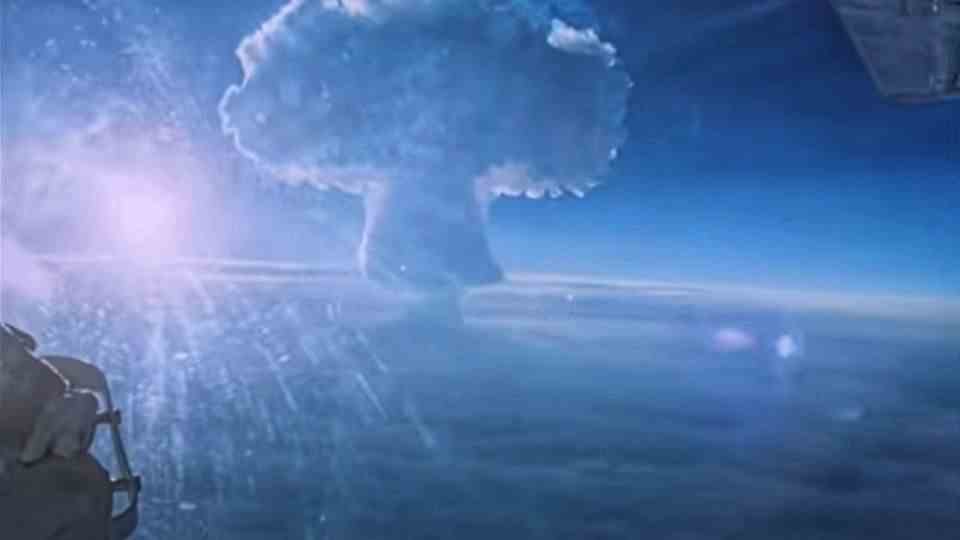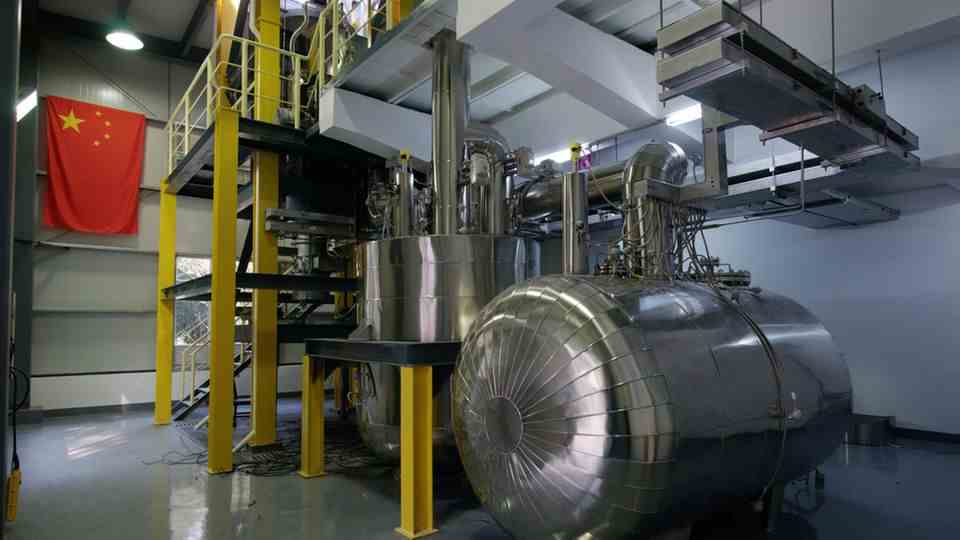fusion reactors
USA achieve breakthrough in fusion technology – for the first time more energy was generated than consumed
The facility’s target bay.
© Lawrence Livermore National Laboratory
With a barrage of 192 lasers, researchers at Lawrence Livermore National Laboratory triggered nuclear fusion. For the first time, they captured more energy than the system consumed. An important step towards infinite clean energy.
US scientists have made a breakthrough in fusion technology. For the first time, they started a “real” fusion reactor in the laboratory, i.e. a system that generates more electricity than it needs to operate itself. The previous devices of fusion technology were colloquially called reactors, but strictly speaking they were huge electricity consumers and not energy producers.
The power of the sun
What is fusion engineering? Fusion reactors are part of nuclear technology and yet they work in a completely different way than the reactors that have been built up to now, which rely on uranium fuel rods. The energy of the sun is unleashed in a fusion reactor. Under certain conditions – very high heat and very high pressure – two hydrogen atoms fuse to form a helium atom. During this process, energy is released. If the process can be controlled, such reactors could supply an infinite amount of energy without any impact on the climate. Measured by the requirements of the reactors, hydrogen is available in infinite quantities. In addition, the problem of radiological contamination does not exist to the same extent as with reactors that work with uranium. Another plus: There can be no accident like a meltdown. Fusion only occurs under certain conditions, which have to be produced at great expense. In the event of a breakdown, the artificial “sun zone” collapses and the merging stops.
Prototype H-bomb
The Lawrence Livermore National Laboratory in California uses a process called inertial confinement fusion. It differs fundamentally from the large fusion reactors such as ITER in France or the large-scale plants in China and Korea. In these tokamak reactors, one tries to create a continuous merging like in the sun in a donut-shaped ring. The basic principle of tokamaks was conceived by Soviet scientists in the early 1950s. But as ingenious as their vision was, it turned out that the way there was extremely rocky in practice and only now, after 70 years, is there a chance that these reactors can work permanently.
The NIF Target Bay in Livermore is based on a different idea, instead of a shining sun, an explosion is initiated like a mini hydrogen bomb. To do this, the beams from 192 lasers hit tiny hydrogen fuel pellets. This breakthrough did not come from one of the numerous start-ups in the field, it happened in a state-owned facility. Success is also a step joke of history. The breakthrough was not achieved in the civilian research facilities, which cost billions, the National Ignition Facility is dirt cheap compared to ITER at a cost of 3.5 billion dollars. And it was built primarily to test nuclear weapons. The current fusion plant is a kind of follow-up use.
Hydrogen is bombed
The 192 lasers are fired in a master oscillator room and then embark on a journey of more than 100 meters before entering the “target bay”. This is a 30 meter high concrete silo with a diameter of 30 meters. Essentially, the bay is filled with diagnostic instruments. In the center of the silo is a target chamber, in turn a capsule. in which the hydrogen pellet is stuck. The vacuum here is close to absolute freezing. And this is where the 192 beams meet precisely and release 500 trillion watts of power for up to 20 billionths of a second.
A setup like Target Bay in Livermore will not produce continuous fusion. From the laboratory test, they only allowed systems to be derived that cause a sequence of energy explosions. All private start-ups follow this idea, albeit in different ways. The disruptive merger offers two advantages. For one thing, there is no need to build a facility that permanently creates conditions like the sun, and fusion does not need to be permanently tamed.
Disruptive is easier
In the tokamak reactors, it has proven to be extremely expensive to heat and compress a plasma flow while keeping it stable. Only new types of electromagnets allow us to hope that we can still reach our goal on this path. In addition, the tokamak reactors struggle to keep the plasma flow stable once fusion begins, i.e. to create a permanent process. Even if this succeeds, there is a third problem. A tokamak is so expensive to build and operate that it is feared that the facility will not be commercially viable. The explosion reactors do not have these problems. Every explosion is a self-contained process that only has to be initiated with “force” – here with the laser energy. It is not a harmonious process that is complicated to keep in balance.
Source: FT, Lawrence Livermore National Laboratory





